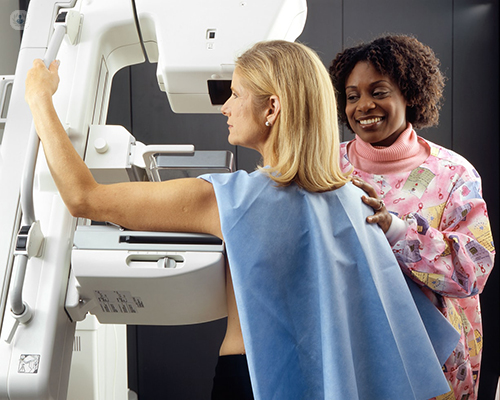Breast awareness: how to check your breasts
Escrito por:Breast cancer is very common as one in seven women are likely to develop the disease in their lifetime. It is very important to be ‘breast aware’, which means that you should examine your breasts regularly, once a month, preferably mid-cycle and become familiar with how they look and feel.
Mr Mohsin Dani is a breast and oncoplastic surgeon who specialises in breast cancer and he took the time to share his expert advice on why and how you should regularly check your breast as they continually change at different stages of your life.

Why is it important to regularly examine your breasts?
By regularly examining your breasts, one knows how the breasts feel and it’s easy to pick up any new changes. Any new change which persists beyond one week should be checked by your general practitioner (GP) or a specialist surgeon and investigated.
How does a woman check her breasts?
An easy way to check the breast is to follow the steps ‘one, two, three’, which means that you should examine your breasts:
- Once a month
- For two minutes
- And do three things: look, move, and feel.
Stand in front of the mirror and look for any changes or asymmetry when you compare both breasts. Move both of your arms above your head and again look for any obvious changes. Feel using the flat of your fingers, all the way around the breast. Do not pinch and do not squeeze the nipple. It is advisable to examine yourself in a standing position as well as lying down.
What are the changes that a woman should look out for?
Changes to pay attention to include:
- Indrawing of the nipple
- Change in shape of the breast
- Blood-stained, spontaneous discharge from the nipple
- Skin indentation (pulling in of the skin) especially when lifting the arm
- Any new lump in the breast or armpit
- Change in the texture of the breasts
- A rash over the nipple
- Constant pain in the breast
If any of these symptoms persist for more than a week then please visit your doctor.
Do any of these abnormalities necessarily mean that they are a sign of breast cancer?
None of these symptoms listed above are 100% diagnostic for breast cancer. There are a lot of benign causes for these changes but it is important to get them checked without panicking.
What should a woman do if they notice any changes?
Examine your breasts again a week later and if it’s persistent you should see your GP or a specialist directly for evaluation and further investigation.
When is a woman offered breast screening in the UK?
On the NHS breast screening programme, all women are offered a mammogram every three years from the age of 50 until they turn 70 and some areas are piloting screening women from 47 to 73 years.
If you have family members with breast or ovarian cancer, you will be assessed in a family history clinic and depending on your future risk, maybe offered yearly mammogram from the age of 40 years till you turn 60.
If you are symptomatic and see a specialist, they would do a mammogram if you’re 35 or above with or in combination with an ultrasound scan if appropriate.
A mammogram for a woman below the age of 35 is not very good unless there are exceptional circumstances. Below the age of 35, if there are specific signs or symptoms such as a lump, for example, we would do an ultrasound scan and if necessary, then add a mammogram.
If you’re concerned about any of the symptoms listed above that have persisted for more than a week, do not hesitate to book an appointment with Mr Dani via his Top Doctor’s profile.


